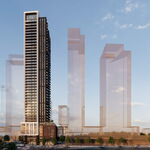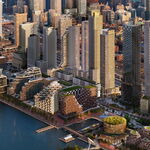scarberiankhatru
Senior Member
No, they would not have to expropriate buildings on both sides to widen Jane. They could also nix the bike lanes. I'm sure both of these options were deemed impossible, though.
For those thinking of running Jane down the Weston Sub, here is what the ROW looks like at St Clair as of Aug 30-08
West
East
The best you can hope for is 6 tracks in this ROw at this point. 1/2 for CP, 1/2 for Blue22/VIA, 2 for Georgetown GO. Need a track for the Bolton line. Leaves nothing for TTC.
Or you could do this:
Make changes to the regional railway system to divert freight trains away from the core.
2 TTC tracks (DRL or Jane LRT branch)
4 tracks is more than enough for GO/VIA/Airport Rail, if they use half-decent signals.
No through freight goes through the core anymore. Only locals to serve the few remaining industries, but those are only one run per day or so.
There's still the CP North Toronto line. Freight trains still pass through the city on a regular basis.
For those thinking of running Jane down the Weston Sub, here is what the ROW looks like at St Clair as of Aug 30-08
West
East
The best you can hope for is 6 tracks in this ROw at this point. 1/2 for CP, 1/2 for Blue22/VIA, 2 for Georgetown GO. Need a track for the Bolton line. Leaves nothing for TTC.
Why would there need to be 6 tracks for different heavy rail companies/concerns? In cities like Berlin and Tokyo, they are able to cram literally thousands of trains a day of all stripes (high speed rail, suburban rail, etc.) on 4 tracks. Even on our own continent, Metro North, Amtrak and NJT - basically all the traffic into Penn station - are able to use the four tracks of the old Penn Central tunnel perfectly fine.
I find their comparison of BRT with LRT somewhat lopsided. They list one advantage for BRT with a slew of disadvantages, whereas for LRT they list a ton of advantages, with one disadvantage (cost). Strikes me as disingenuous somehow.




